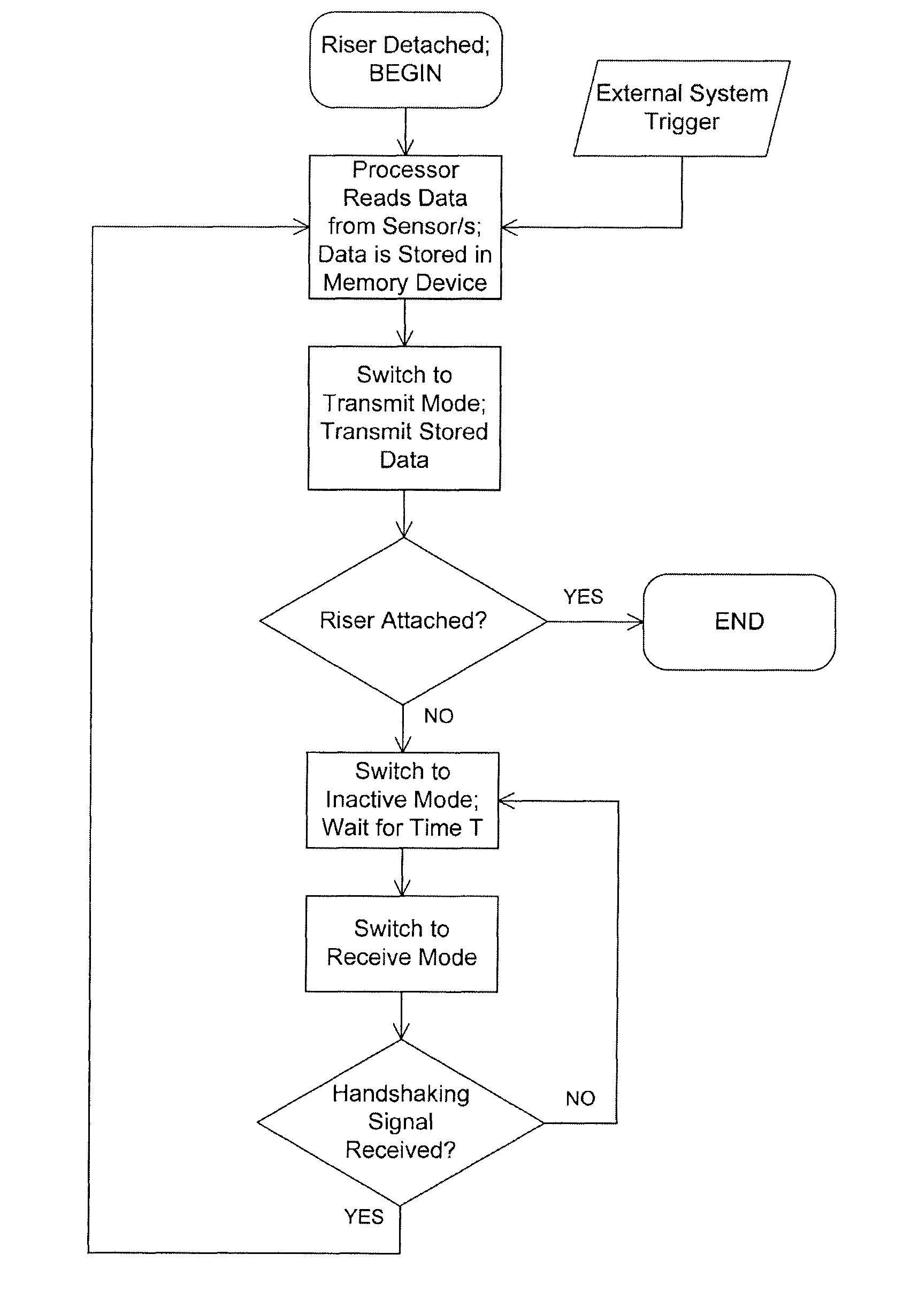Wireless auxiliary monitoring and control system for an underwater installation
a control system and underwater installation technology, applied in the direction of transmission, electric devices, etc., can solve the problems of inability to monitor the lower stack, loss of data supply from sensors and valves in the stack, and inability to monitor the well operation conditions. , to achieve the effect of expanding the rang
- Summary
- Abstract
- Description
- Claims
- Application Information
AI Technical Summary
Benefits of technology
Problems solved by technology
Method used
Image
Examples
first embodiment
[0048]FIG. 2 shows a diagram of a wireless auxiliary monitoring system for an underwater installation according to the present invention. The underwater installation might form one section of a hydrocarbon drilling facility or a hydrocarbon production facility and comprises a lower stack 26, a lower marine riser package 25 and a well head 22 located on the seabed 20. A riser 23 connects to a topside rig or drilling vessel (not shown). During normal operation, the riser 23 is attached to the wellhead 22 via the lower marine riser package 25 and the lower stack 26. The lower stack 26 is fixed to the wellhead 22 on the seabed and comprises valves, pressure sensors and other devices (not shown) for maintaining and monitoring the state of the wellhead. An umbilical 24 associated with the riser 23 includes data and hydraulic lines for the monitoring and control of the wellhead; the control systems may be operated remotely from the topside rig (not shown). The lower marine riser package 25...
second embodiment
[0075]FIG. 5 shows a diagram of a wireless auxiliary control system for an underwater installation according to the present invention. The underwater installation might form one section of a hydrocarbon drilling or production facility and comprises a lower stack 56, a lower marine riser package 55 and a well head 52 located on the seabed 50. A riser 53 connects the wellhead 52 to a topside rig (not shown). During normal operation, the riser 53 is attached to the wellhead 52 via the lower marine riser package 55 and the lower stack 56. The lower stack 56 is fixed to the wellhead 52 on the seabed and comprises actuators, pressure sensors and other devices (not shown) for controlling the state of the wellhead. An umbilical 54 associated with the riser 53 includes data and hydraulic lines for the monitoring and control of the wellhead, the control systems may be operated remotely from the topside rig (not shown). Generally, umbilical 54 is affixed to the outside of the riser 53. The low...
PUM
 Login to View More
Login to View More Abstract
Description
Claims
Application Information
 Login to View More
Login to View More - R&D
- Intellectual Property
- Life Sciences
- Materials
- Tech Scout
- Unparalleled Data Quality
- Higher Quality Content
- 60% Fewer Hallucinations
Browse by: Latest US Patents, China's latest patents, Technical Efficacy Thesaurus, Application Domain, Technology Topic, Popular Technical Reports.
© 2025 PatSnap. All rights reserved.Legal|Privacy policy|Modern Slavery Act Transparency Statement|Sitemap|About US| Contact US: help@patsnap.com



